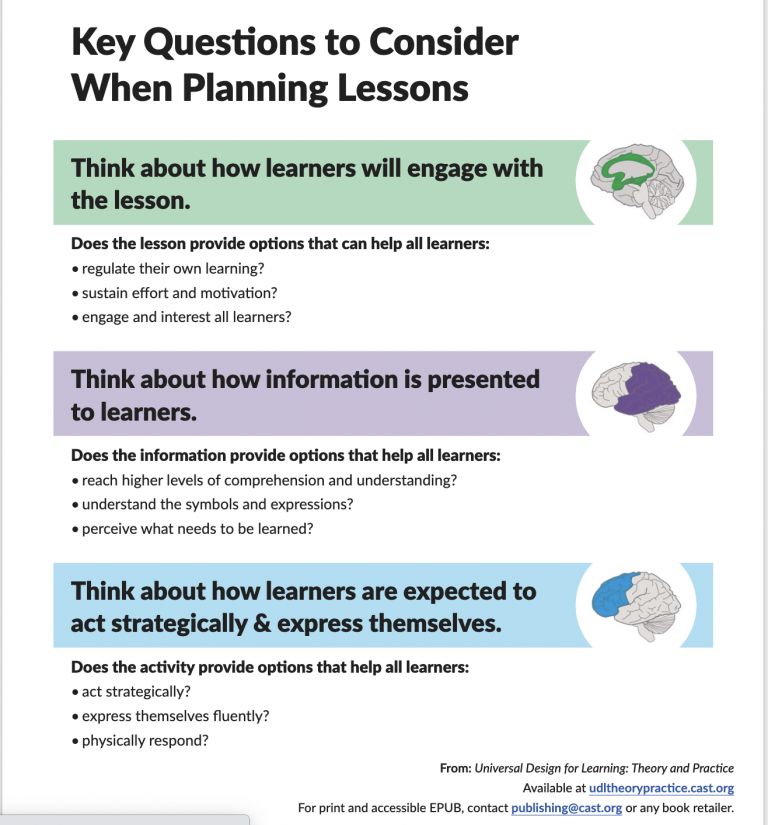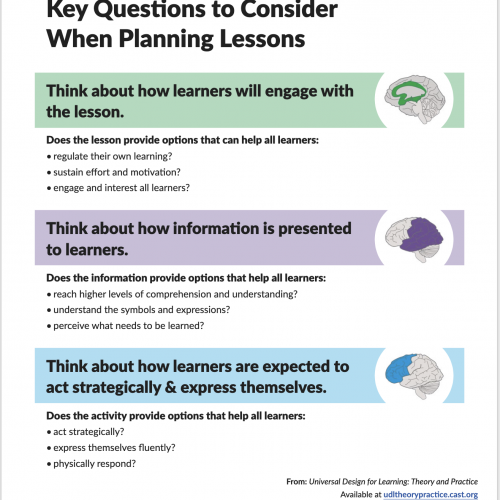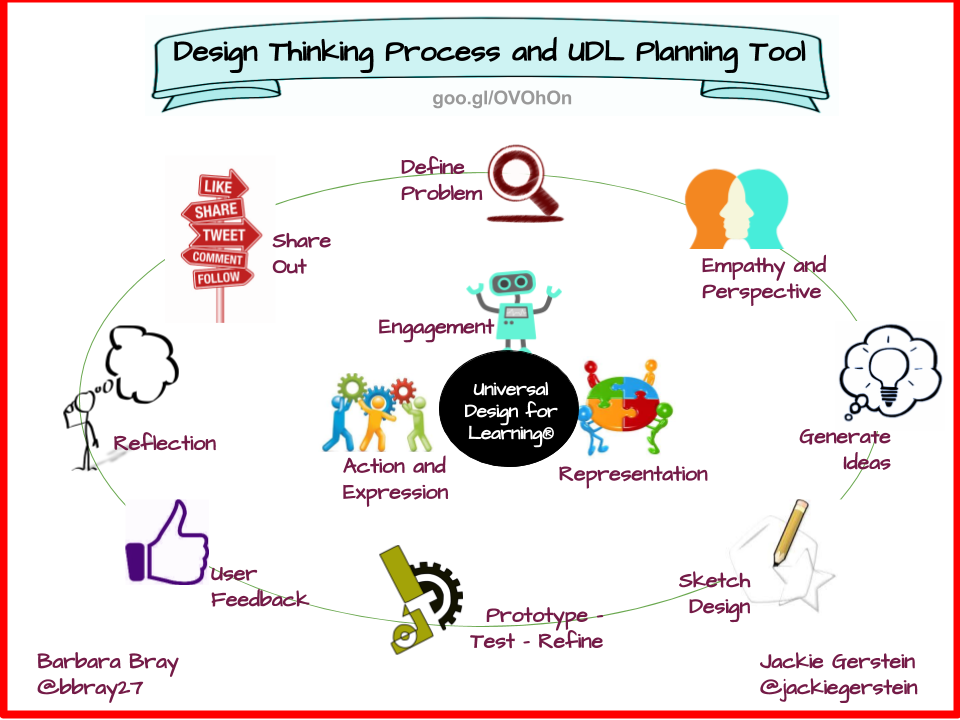Universal Design for Learning

The UDL framework guides the design of instructional goals, assessments, methods, and materials that can be customized to meet individual needs. UDL prompts educators to provide learners with multiple means of engagement, representation, action and expression. Learn more about the Universal Design for Learning Guidelines on the CAST website.
In 2017, educators from across Quebec went to the active learning classrooms at McGill University to talk about the connections between classroom space design and UDL. Here is a resource website that was developed following this meeting.
You may also want to check out our curated ‘Inclusion and Diverse Needs’ resources.
Universal Design for Learning and the Design Process
The Design Process and UDL go hand-in-hand to help teachers create student-centred lessons. Empathy is central to both approaches, and teachers are prompted to consider students’ rights, wants, and needs.
Comparing the below prompts may highlight how the Design Process and UDL complement each other.
UDL framework prompts:

Step #1 of the Design Process prompts:

One resource that members of our team found helpful was the Design Thinking Process and UDL Planning Tool by Jackie Gerstein, Ed.D. and Barbara Bray. This article explores the connections between UDL and Design Thinkings and provides a useful teacher planning tool.
UDL in a Social Sciences Context: Resources and Challenges in a Digital Age – RÉCIT ACE 2022
Paul Rombough (Social Sciences consultant at LEARN Quebec) discusses Universal Design for Learning in the context of Social Sciences.
This is a recorded webinar which took place at the Anglophone Community Expo (ACE) 2022 conference.











